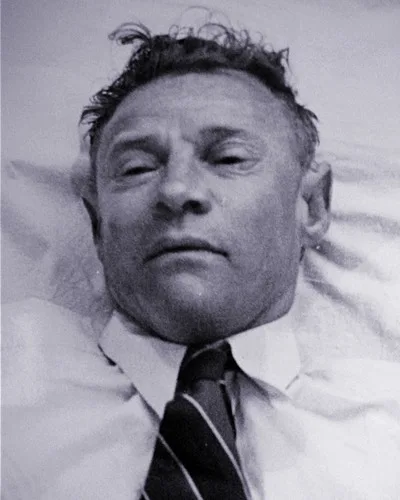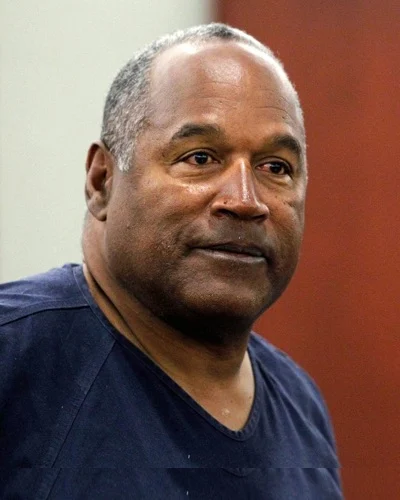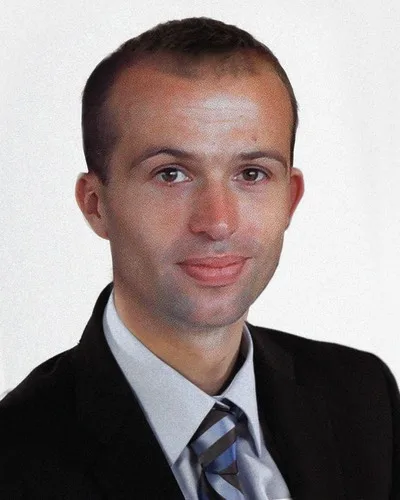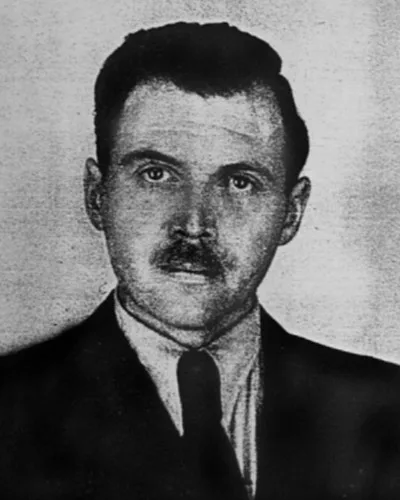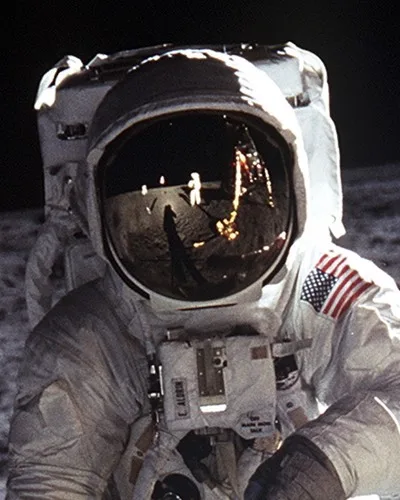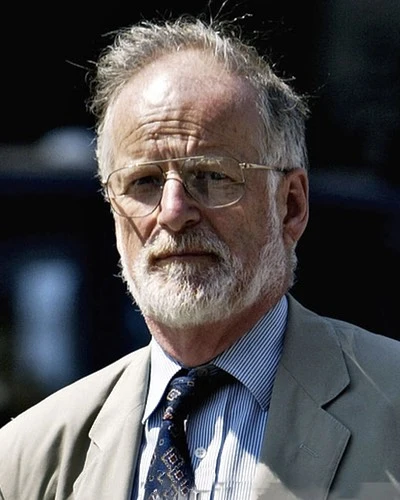Legendary CIA counter-intelligence chief James Jesus Angleton once described the world of espionage as a ‘wilderness of mirrors’.
No more apt description can be applied to Watergate, the biggest scandal in U.S. political history. Only the most basic facts are undisputed, whilst much else is Hollywood myth-making.
The story begins one night in June 1972, when 5 burglars were arrested at the Watergate building, a large office complex in Washington. The men were apprehended in the offices of the Democratic National Committee, complete with cameras and bugging devices.
Inside the address book of one of the burglars was the name of E Howard Hunt, a career CIA man who had recently left the agency to work for the Nixon White House.
This crucially linked the burglary to the Campaign to Reelect the President, waggishly referred to by the acronym CREEP. The committee had been set up by the White House to gather dirt on the democratic party ahead of the 1972 presidential elections.
Whilst there was never any suggestion President Richard Nixon or his senior aides had ordered the burglary, the mere connection would be politically disastrous for the administration, and Nixon knew it.
It was widely believed that the target of the operation was the office of Larry O’Brien, the head of the Democratic National Committee. The inference would be obvious, Nixon was after political intelligence about his rivals in the upcoming election.
Clearly, if any association at all could be established to the White House, it would be abundantly clear to the world that Nixon had ordered the burglary. The inveterately paranoid president had no choice but to order a cover-up.
Somewhat ironically, Nixon easily won the 1972 election. But as 1973 rolled on, the connections between the Watergate burglary, and particularly the White House’s attempts to conceal this connection, started to become public.
History tells us, informed particularly by the coverage of the scandal by journalist Bob Woodward and Carl Bernstein in the Washington Post, that the cover-up was what lead to Nixon’s downfall, rather than the original burglary.
Over the next year, Nixons position became increasingly precarious. Senate investigations and Woodward’s reports in the Post, informed by the mysterious anonymous informant ‘Deep Throat’, gradually revealed the extent of the White House’s complicity.
The final blow came with the sensational news that Nixon had installed a secret taping system in the Oval Office, which had recorded every word of Nixon’s conversations with his senior aides.
When the tapes were finally handed over to investigators, the true extent of the corruption and cover-up at the White House was revealed. Nixon was doomed.
With impeachment proceedings imminent, the president took the initiative and on August 8th 1974, more than 2 years after the burglary, Richard Nixon became the first U.S. President in history to resign.
Subsequent hearings would lead to 40 people been sent to jail, including the 5 burglars, their handlers E Howard Hunt and G Gordon Liddy, senior Nixon aides H. R. Haldeman and John Ehrlichman, White House lawyer John Dean and Attorney general John Mitchell.
The only senior figure not to serve time in jail was Nixon himself, who was pardoned by new President Gerald Ford in 1975.
This then is the official story of Watergate. There is no doubt that the Nixon presidency skirted with criminality and ordered a vast cover-up of their connections to the Watergate burglary.
But one glaring question cast a shadow over the whole story. A question of fundamental importance, but one entirely overlooked by all of the investigations and 40 years of mainstream coverage of the scandal.
What was the reason for the burglary? The official theory that it was to gain political intelligence on the democratic party by bugging DNC chairman Larry O’Brien’s office’s had a serious flaw — it was not true.
Larry O’Briens phone had not been bugged. His office was of no interest to the burglars, indeed they had planted no bugs in the entire complex. The official story simply made no sense.
Amidst the widespread fervour to convict Nixon, a minority voiced their doubts. Ironically, Nixon himself, whilst hardly an impartial voice, most astutely articulated these misgivings in his memoirs.
“It sounded preposterous. Cubans in surgical gloves bugging theDNC! I dismissed it as some sort of prank”, Nixon’s incredulity was well placed in light of the evidence.
“Anyone who knew anything about politics would know that a national committee headquarters was a useless place to go for inside information on a presidential campaign”, he stated.
“The whole thing was so senseless and bungled that it almost looked like some kind of a setup.”
Was Nixon right? Was there something wrong with the official story? 10 years after Nixon’s resignation journalist Jim Hougan’s landmark book Secret Agenda finally crystallised the doubts.
"The whole thing was so senseless and bungled that it almost looked like some kind of a setup."
Not only was the Watergate burglary nothing to do with bugging the democrats, the perpetrators were almost entirely made up of former-CIA employees.
One of the few concrete pieces of physical evidence in the whole affair was also revealed — a key found on the person of one of the burglars which pointed to the true target of the operation.
But most disturbing of all, Hougan revealed the existence of something dark and insidious. Amongst the burglars themselves, there was a secret agenda at work. Some of them, it seems, set out to deliberately sabotage the operation, ensuring it’s discovery.
Angleton’s wilderness of mirrors was reflecting a strange and confusing picture. Was there another agenda at work? And was it designed to destroy Richard Nixon?
Evidence for
The Burglars
One critical, but often overlooked fact about the Watergate burglars is their close connections with the CIA.
The five men caught red-handed in the building were James McCord, Bernard Baker, Frank Sturgis, Eugenio Martinez and Virgilio Gonzales. McCord was a former CIA employee, whilst the latter 4 men were veterans of CIA attempts to oust Cuban leader Fidel Castro in the 1960s.
The burglary was coordinated by E Howard Hunt, a former White House consultant and career CIA operative who retired from the agency in 1970.
Alongside Hunt was G Gordon Liddy. The ostensible ringleader of the operation, Liddy was the only member of the Watergate 7 to have no connections to the CIA. Many, including Liddy himself in later years, regard him as an unwitting dupe to the senior CIA men in the operation — Hunt and McCord.
With so many ex-CIA men amongst the conspirators, the clear suspicion is that the Watergate burglary had been infiltrated by a CIA plot of some kind. These suspicions are deepened by a closer examination of Hunt and McCord.
Hunt’s supposed retirement from the agency in 1970 warrants skepticism. Twice before he had ‘retired’ from the CIA, only for the retirement to be revelated as a subterfuge to distance Hunt from the CIA, whilst secretly continuing to work for them on clandestine projects.
Was Hunt’s 1970 retirement another ploy to hide a continuing CIA operation? Within a year he would be at the heart of the White House, working for Nixon’s secret team of ‘plumbers’, set up to plug political leaks emanating from the government.
Whilst there, Hunt would continue to have contacts with the CIA. He would send them secret packages from the White House, supposedly filled with political gossip. He would also regularly meet senior agency directors, engagements Hunt claimed were entirely social.
Like E Howard Hunt, James W McCord had been a member of the White House’s plumbers. Also like Hunt, he was a former CIA operative, a fact which contradicts the official account that McCord was merely a lowly technician for the agency
McCord was actually a senior member of one of the CIA’s most important and secret divisions — The Office of Security. The OS was responsible for vetting employees and rooting out moles.
They were also deeply involved in covert surveillance, particularly the gathering of sexual dirt, and McCord was one of their most experienced agents. His claim to be a mere technician was the first of many lies he told about his role in Watergate.
One of the biggest of the lies was McCord and Hunt’s insistence that they were unacquainted with each other until introduced by G Gordon Liddy in 1972. The evidence, however, shows the two men had been professionally involved for at least a decade.
Enrique Ruiz-Williams, a veteran of the CIA’s anti-Castro operations, recalls how both Hunt and McCord were his CIA handlers in the early 1960s. Tellingly, Ruiz-Williams recalled how the pair used the same alias. During Watergate, both Hunt and McCord would again use the same alias.
In 1969, testimony from a former landlady showed that McCord and Hunt were running some kind of entrapment or surveillance operation out of a rented basement apartment, presumably for the Office of Security.
That the pair lied about their long-standing association and their roles in the CIA suggests a sinister possibility. Were Hunt and McCord actually running a covert CIA operation that night at Watergate?
Under the unwitting nose of G Gordon Liddy, were the pair operating a conspiracy within a conspiracy? A plot with a secret agenda unknown to, perhaps even against, their ostensible paymasters at the White House?
The Bugs
Of all the mysteries surrounding the Watergate affair, by far the most perplexing is the actual burglary itself. What was its purpose?
The ringleader of the operation was G Gordon Liddy. As far as he was concerned the purpose was to plant bugs in the office of Larry O’Brien, the leader of the Democratic National Committee, in order to gather political dirt ahead of the 1972 presidential elections.
This version of events was the one shared by the subsequent Watergate hearings, Bob Woodward’s famous Washington Post stories and the heavily fictionalized Hollywood film All The President’s Men.
As G Gordon Liddy himself now acknowledges, this official narrative is not true.
There were actually two Watergate burglaries. The first occurred on May 28th, 1972. Here, James McCord says he planted a telephone bug and a room listening device in the office of Larry O’Brien. Other accounts have an obscure DNC official called Spencer Oliver as another target.
The second burglary on June 17, where the men were caught and arrested, was supposedly ordered to correct a problem with the bug planted on May 28, and set up other bugs.
Two pieces of evidence show this official account to be a fantasy, concocted by James McCord and E Howard Hunt.
Despite the fact McCord was a surveillance expert and had access to near unlimited funds, he chose cheap off the shelf bugging equipment for the operation.
These type of wiretaps were line-of-sight. They could only operate by placing the receiving equipment in a direct line with the bug. Through windows was OK, but not walls.
To this end, McCord had rented a room in the Howard Johnson motel, directly overlooking the Watergate. But McCord knew full well that O’Brien’s office was at the opposite side of the building, meaning the bugs could never have worked.
Such an elementary error could not have been made by accident, indicating there was never any intention to bug O’Brien’s office. But as Jim Hougan revealed in his seminal book Secret Agenda, astonishingly, there was never any attempt to bug the Watergate at all.
The day before the June 17 burglary the DNC, anticipating that they may be a target for espionage, had the entire office complex swept for bugs by the phone company, who found nothing. After the June 17 arrests, the FBI also swept the building, twice, and similarly found nothing.
What was so strange about this was, for three weeks following the first break in, McCord had an employee stationed at the Howard Johnson hotel transcribing conversations from these nonexistent bugs.
Conveniently, and to the bafflement and rage of Liddy, McCord didn’t take the most basic precaution of tape-recording these wiretaps, so his deception would not be revealed.
It has been suggested by some authors that the real target of the surveillance was not Watergate, but the adjacent Columbia Plaza apartments, the location of an alleged high-class call girl ring been covertly monitored by the CIA.
McCord and Hunt’s true purpose may have been to conceal this operation from their fellow burglars, to ensure it remained undiscovered.
But whatever obscure agenda James McCord was working to, it was clearly nothing to do with Richard Nixon or bugging the Democrats. The official story makes so little sense because it simply isn’t true.
And if this bewildering state of affairs wasn’t already confusing enough, it was about to take an even stranger, deeper, and darker turn.
Sabotage
The decision to launch a second assault on the Watergate building on June 17 would lead to the discovery of the plot and ultimately the downfall of a president. But as Nixon himself so astutely pointed out, this burglary was so incompetently conducted as to be unbelievable.
The Watergate team was stuffed full of seasoned, hardboiled covert CIA and FBI operatives. Would they really be caught red handed executing a simple break in?
An unsettling suspicion rears its head. Did some members of the team deliberately ensure the plot was discovered? Was the burglary sabotaged from within, perhaps even to set-up Nixon for a fall?
A close examination of Hunt and McCord’s behavior that night suggests exactly that.
A 20 year veteran of clandestine CIA operations, Hunt made the unbelievable decision to leave a briefcase full of incriminating documents in one of the Cuban burglars hotel rooms at the Watergate.
The documents, including an address book, linked the Cubans directly to Hunt and the White House. Equally bizarrely, Hunt instructed the men to take their hotel keys with them to the burglary, guaranteeing Nixon would be implicated if they were caught.
McCord’s sabotage was more nebulous but even more calamitous. In his role as lookout, he failed to notify his cohorts that the coast was clear at the DNC offices for almost an hour. Had he done so, they likely would not have been caught and the Watergate scandal would never have occurred.
Instead, McCord, from his vantage point at the opposite Howard Johnson hotel, told his colleague the building was still occupied, which was a lie. But that was only the beginning of his duplicity.
McCord was also tasked with placing tape over the locks of the stairwell doors at the Watergate to ease the passage of the burglars. He chose to do so in a way that would ensure their discovery.
Instead of taping them vertically, on the inside edge of the door, where the tape would not be visible to guards, he did so horizontally, across the front face of the door, in a way which would clearly noticed.
The conclusion that McCord was determined the taped doors would be discovered by guards is unavoidable. He taped doors two floors up from the DNC, at the offices of the Federal Reserve, where he knew the guards were more vigilant.
There is no suggestion that the Federal Reserve was ever a target for the burglars, so McCord’s taping of their doors is inexplicable unless the intention was to alert security to the presence of the men.
McCords initial door taping was discovered by the building’s guard Frank Willis. Suspicious, but unsure what to do, Willis stalled for over an hour whilst he consulted colleagues about the situation.
During this time, the other conspirators wanted to abort the operation, but McCord ensured them that the guards would simply presume the tape had been added by cleaners.
It was here that McCord made his most egregious act of sabotage. Having prompted his colleagues to continue the burglary, he re-taped the doors. This, more than anything, ensured their capture.
The building’s security guards, on rechecking the locks, discovered they had been retaped and were left with no other conclusion than that there was a burglary in action. The police were called. The men were caught. The rest is history.
McCords bizarre conduct had left his colleagues, the investigators, reports and the history books utterly baffled. What was really going on?
The Motive
There are two plausible explanations, not necessarily exclusive to one another, for the sabotage of the Watergate burglary.
Aside from the miasma of contradictory, inconsistent and self-serving personal accounts from the Watergate 7 about what happened that night, we have very little hard evidence that might attest to the burglaries true purpose.
One such piece of evidence is a key, found on the person of Eugenio Martinez after his arrest. The key, completely unknown to investigators and not publicly revealed until Jim Hougan’s book Secret Agenda in 1984, fit the desk of DNC secretary Ida Wells.
Hougan and other authors have speculated that the real purpose of the burglary was to gather information from Wells’ desk regarding a call girl ring operating from the adjacent Columbia Plaza Apartments.
If so, it may be that the hapless burglars had stumbled upon a top secret CIA operation. Possibly an operation run from the Office of Security, designed to gather sexual dirt on high-ranking senators and diplomats.
Suddenly McCord and Hunt’s actions begin to make sense. The pair, having never really left the agency, sabotaged the Watergate burglary to protect an extremely sensitive clandestine CIA operation.
Alternatively, or perhaps as an additional bonus, the discovery of the burglary would inevitably lead back to the White House. Pliant assets in the media, such as the intelligence connected Bob Woodward at the Washington Post, and a hostile political establishment could ensure the investigation went straight to the top — Richard Nixon.
Nixon, alongside his secretary of state Henry Kissinger, had infuriated both the CIA and military top brass for effectively running a secret government from the Oval Office, with little reference to the agency or the joint chiefs of staff.
The discovery of the Watergate burglars and their obvious links to the White House would at the least undermine Nixon’s administration, if not destroy it.
Evidence against
Self sacrifice
Whilst it seems undeniable that the Watergate operation was sabotaged from within, a serious, even fatal flaw to the theory is the consequences for its protagonists — James W McCord and E Howard Hunt.
Both men, with families and comfortable lifestyles, went to prison for their part in the conspiracy. It seems a real stretch to suggest either, whatever their secret agenda, was willing to serve serious jail time for it.
Hunt, improbably, left behind a stack of incriminating evidence in one of the Cuban burglar’s hotel rooms, directing linking both him and the White House to the crime.
McCord sabotaged the burglary whilst he himself was still in the building, ready to be caught red handed by the police. But his subsequent behaviour, he turned on his conspirators and revealed the whole plot to investigators to get a reduced sentence, strongly suggests he was not keen on a stretch.
Could it be the pair had intended to set up their cohorts but remain undetected themselves? Even seasoned spies like Hunt and McCord make mistakes, after all.
With both men now dead, we’ll probably never know their real motives. One of the strangest and most perplexing crimes of the 20th century remains an enigma, the truth forever lost in a wilderness of mirrors.
Did the Watergate scandal hide a secret agenda? - add your comment below












